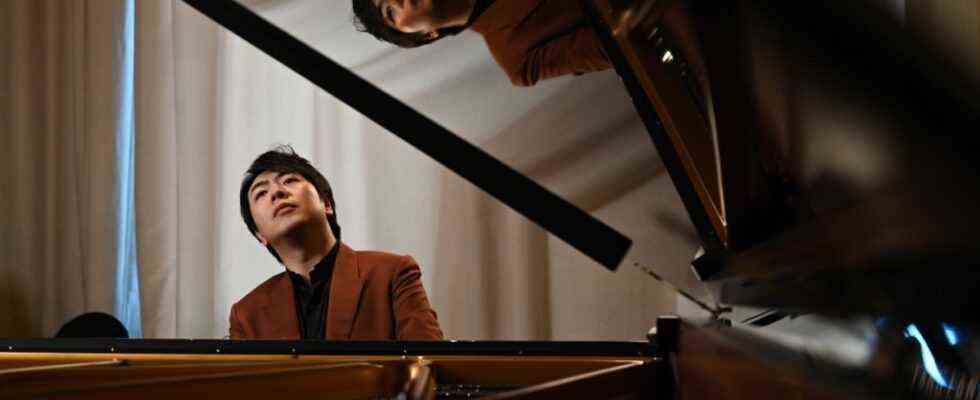Of course he is also a great show talent. The Chinese-American pianist Lang Lang not only inspires a younger audience worldwide, but also very solid classical music fans of the older semesters. This could now be experienced once again in Munich’s Herkulessaal, where his performance of Johann Sebastian Bach’s Goldberg Variations was greeted with a standing ovation.
And they are a very special show part at Lang Lang. After a long inner reverberation, he rises from the Steinway, beams into the audience, bows deeply, a little lower than usual, his hands folded in his lap, and then immediately, rising, stretching them skyward, palms turned inward, with a light one slow fluttering towards the audience. First the stalls are served, first the first rows, then the rest, finally the tier on the left, tier on the right – the hall was fully occupied, and to top it off, the box seats on the podium. Every turn of the body is accompanied by a minimized lunge. Now the whole thing all over again, only briefly interrupted by the organizer, who hands over a bouquet of flowers that he, waving, spontaneously integrates into his homage ceremony. Finally a happily strolling exit to the right. The applause continues, the game starts all over again, this time with a bouquet of flowers from the audience. Now small bonus deposits, short but happy waving to the back rows. Nobody is left here. The choreography is perfect and reminds a bit of the performances of US presidential candidates. Except that Lang Lang is much better at this choreography.
In Schumann’s work, he does not quite follow the romantic ideal of simplicity
The enthusiasm is real, at least on the part of the audience, but the pianist is also of that philanthropic kind that one can meet with nothing but sympathy. Especially since he has now shown in a two-hour non-stop keyboard marathon that he has not only mastered the show, but also the serious core of piano art. However, he introduced the evening with a somewhat well-mannered, distorted arabesque by Robert Schumann, determined by generous tempo lengthening, a lot of pausing, veiling – not quite the romantic ideal of clear simplicity.
Bach’s Goldberg Variations were far more convincing. Lang Lang conveys so convincingly that this is also about highly virtuoso piano playing that one seriously asks oneself whether one would like to refresh one’s Bach image a little more. Especially since Lang Lang takes much more risks in a live concert than in his studio recording from last year, and even with the live recording contained in the same album. Conceptually, the live concert in Munich is reminiscent of Glenn Gould’s idea for Bach’s Well-Tempered Clavier: to place the individual pieces in sharp contrast, especially when it comes to the tempo. So to take the slower ones extremely slowly and the fast ones with virtuoso speed.
Lang Lang has to be credited with the fact that he never really disregards the music, that he then lets Bach have the last word and tries to trace his intentions. The concept is not more important than the work of art, as the performing artist he does not place himself above the composer. But he always goes to the limit of what is possible. The opening Aria drags along panting rather than floating in breathing freely. Perhaps thought a little too abstractly, but here for the time being following a widespread Bach cliché, according to which intellectual greatness is to be equated with humorless seriousness and unworldliness, i.e. rather nonsensical music in the form of sounding arithmetic skills?
But, and this will soon come to light in the following variations: Bach also saw himself as a craftsman, as a top-class craftsman, as a joyful musician and virtuoso poet, not so much as a civil engineer. The sometimes breathtaking complexity of his music, especially in the elaboration of contrapuntal intertwined structures as one also finds in the Goldberg Varions, is more the private pleasure of the composer and the scholar. Bach speaks to the rest of the audience in a sensual sound speech. Lang Lang sees it that way too, at least that’s how he makes music. Sometimes it gets a little didactic when he sets off the bass voice with his left hand clearly against the almost whispering upper voices. And sometimes he also uses the opportunity to showcase the virtuoso in a little show act. Always effective: when the right hand suddenly reaches far to the left over the left and dabs a few notes at the bottom of the bass. And flung back again and back down again. Lang Lang manages to find a fingering that forces him to bend so far to the left on the piano stool that he is lying more than sitting and you can hear the rumble in your ears when he falls off the stool. But he doesn’t.
It was probably just a little joke to loosen up some long-drawn-out variations. Bach’s imagination is almost limitless, an interesting detour still occurs to him, a new field to be plowed in compositionally. Lang Lang then rewards the listener in the following variation with really amazing keyboard acrobatics. Now the fingers of both hands are so closely meshed that you can hear and understand more than through concentrated observation. This virtuosity is not just theater, albeit a very good one, but musically justified. It can be so fast, it brings fresh momentum, joy. The legend that these pieces should bridge Mr. Goldberg’s sleepless nights or even bring him back to sleep has long been refuted. This work can also be fun. You don’t have to imagine Bach as a humorless person.

